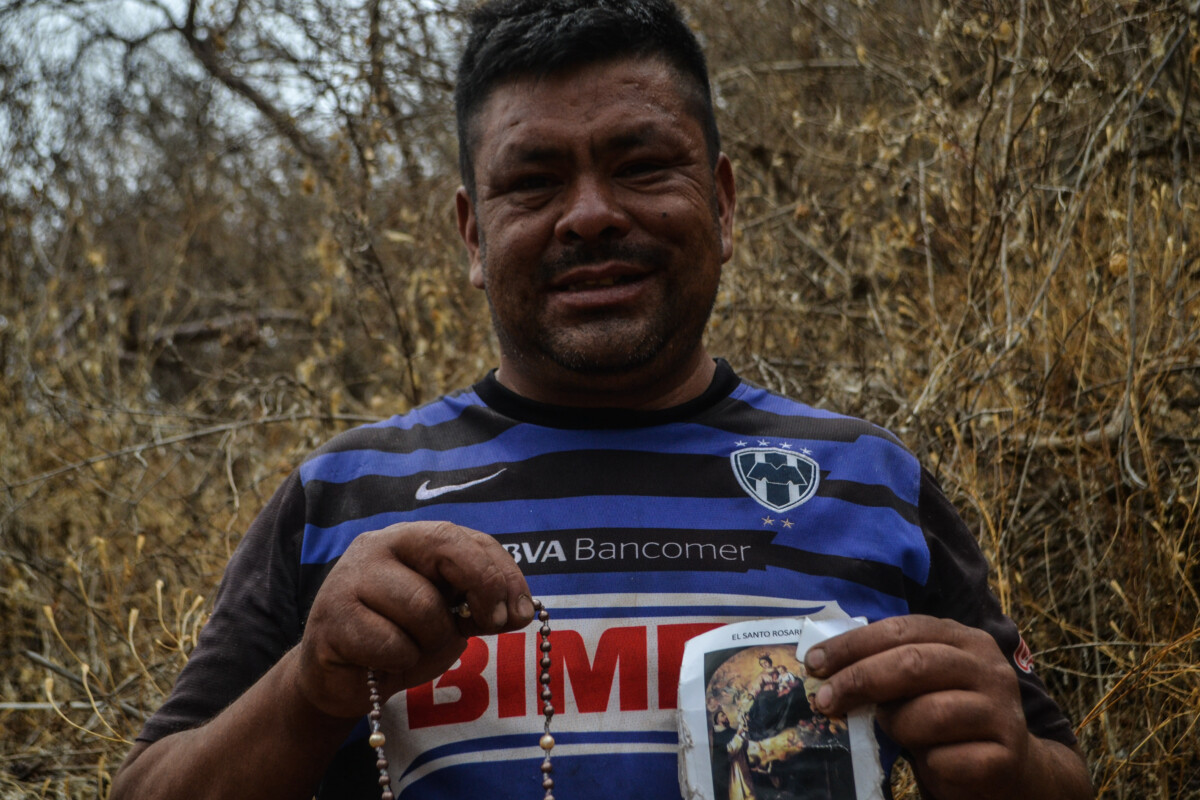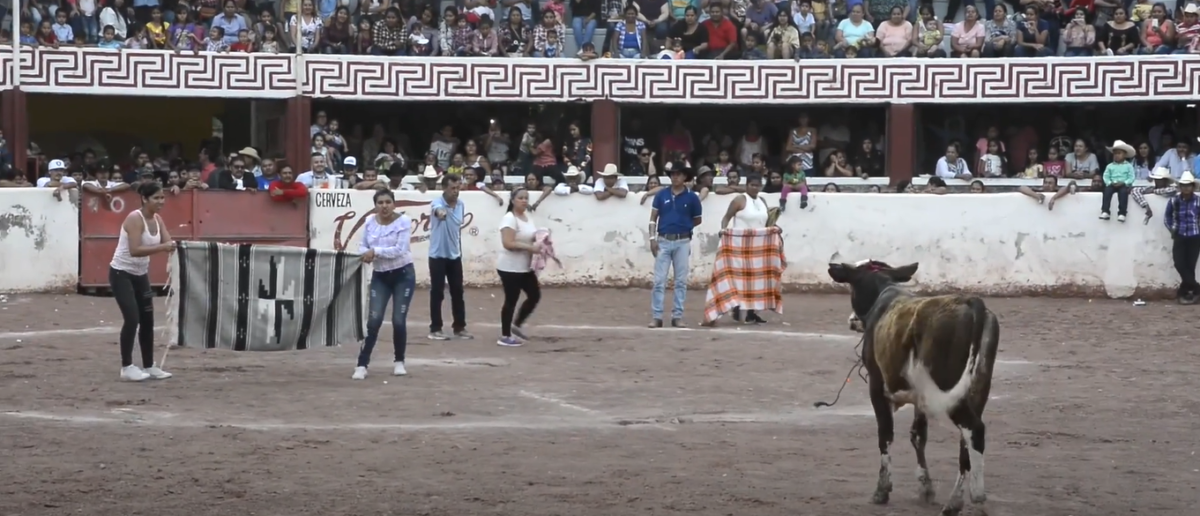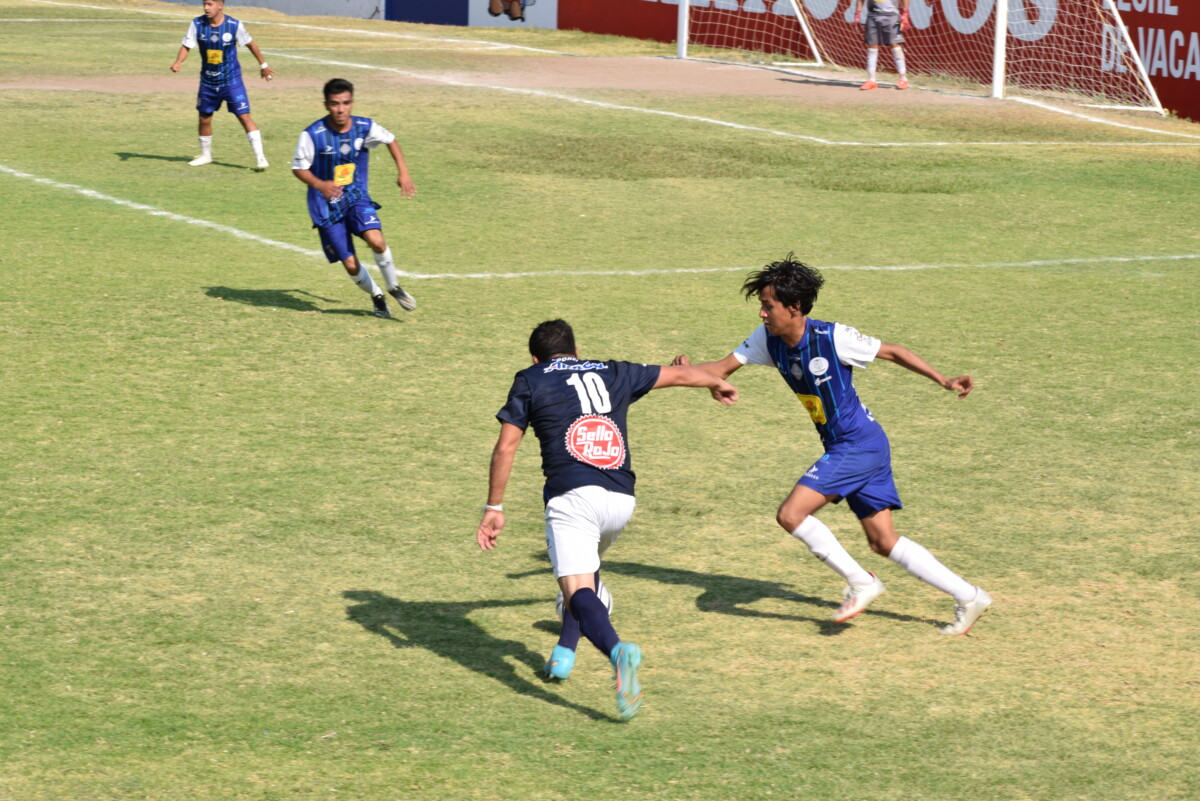Localidades
Praying as they walk, pilgrims ascend trail to the cross on the hill in Jocotepec
Pilgrims pray as they walk, a rosary in one hand. Photo: Hector Ruiz.
Héctor Ruiz Mejía (Jocotepec).- About 500 people, fewer than in past years, attended the traditional pilgrimage to the cross on the hill of the municipal seat of Jocotepec, on May 3.
The difficult trail ascends for more than 1.7 kilometers (about a mile) and takes an average time of one hour and 40 minutes.
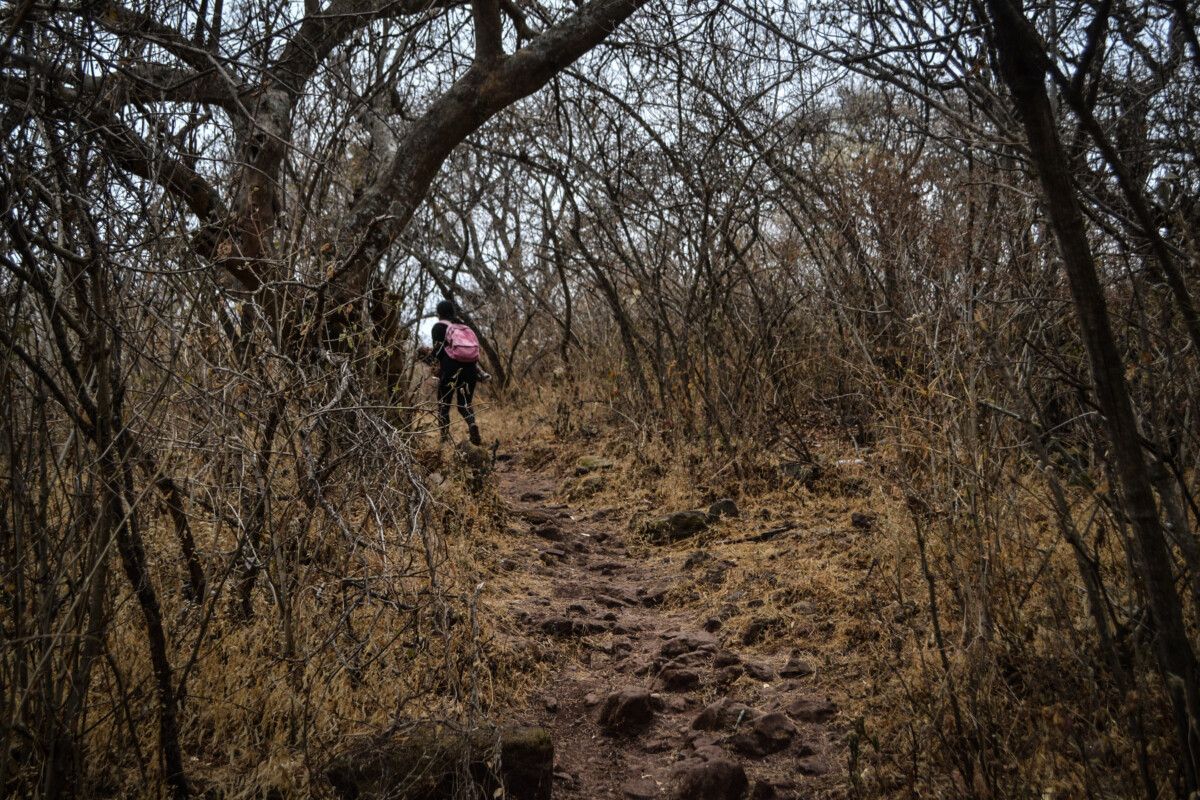
Enjoying the view from the top of the Jocotepec hill. Photo: Hector Ruiz.
Authorities from the Jocotepec Civil Protection and Fire Department, who were providing assistance for the walkers, said they counted approximately 500 people.
“In past years, we had groups of up to 100 people in a row,» one said, suggesting that the traditional event may be in decline.
As a result, the firefighters and paramedics in attendance had little to do.
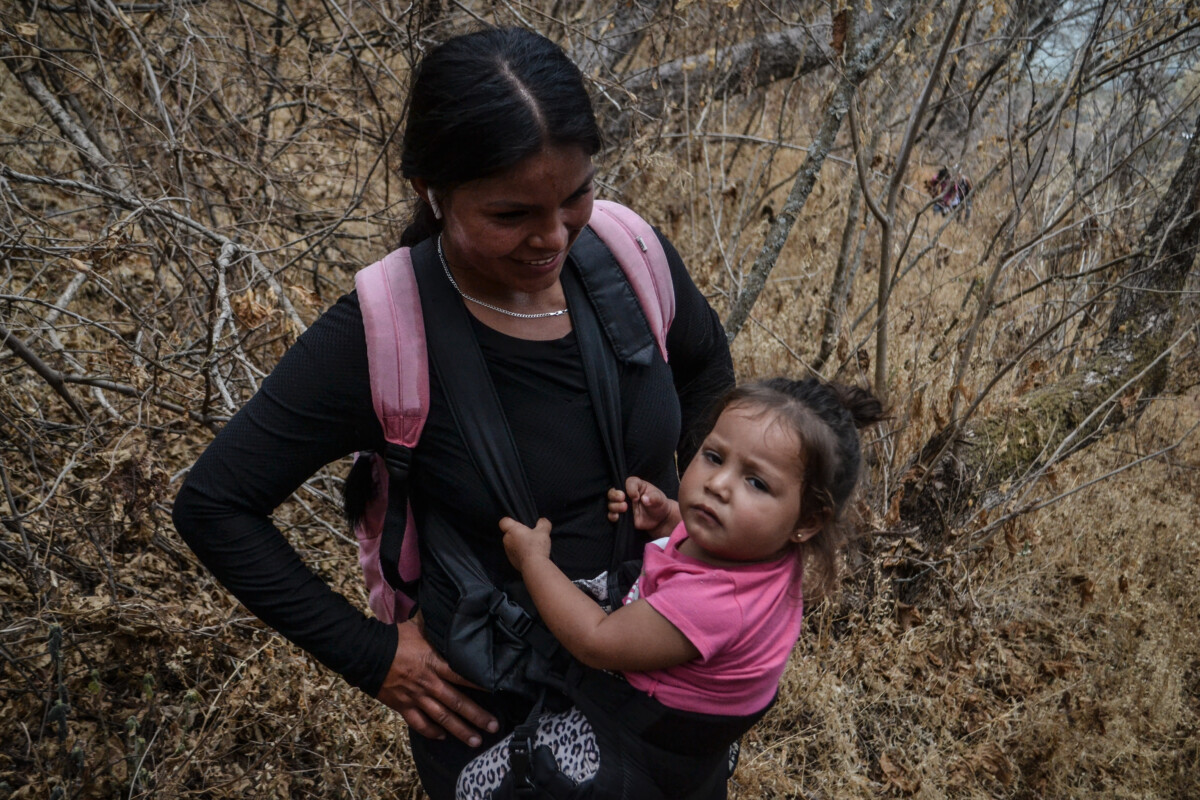
A woman climbs the hill at a rapid pace. Photo: Hector Ruiz.
Among the faithful who did take part was Gustavo, who said he had made the pilgrimage «his whole life” — asking Christ for help and thanking Him for what he has already.
“Every year I come here to pray . . . and to remember the importance of this tradition for our people,” he said.
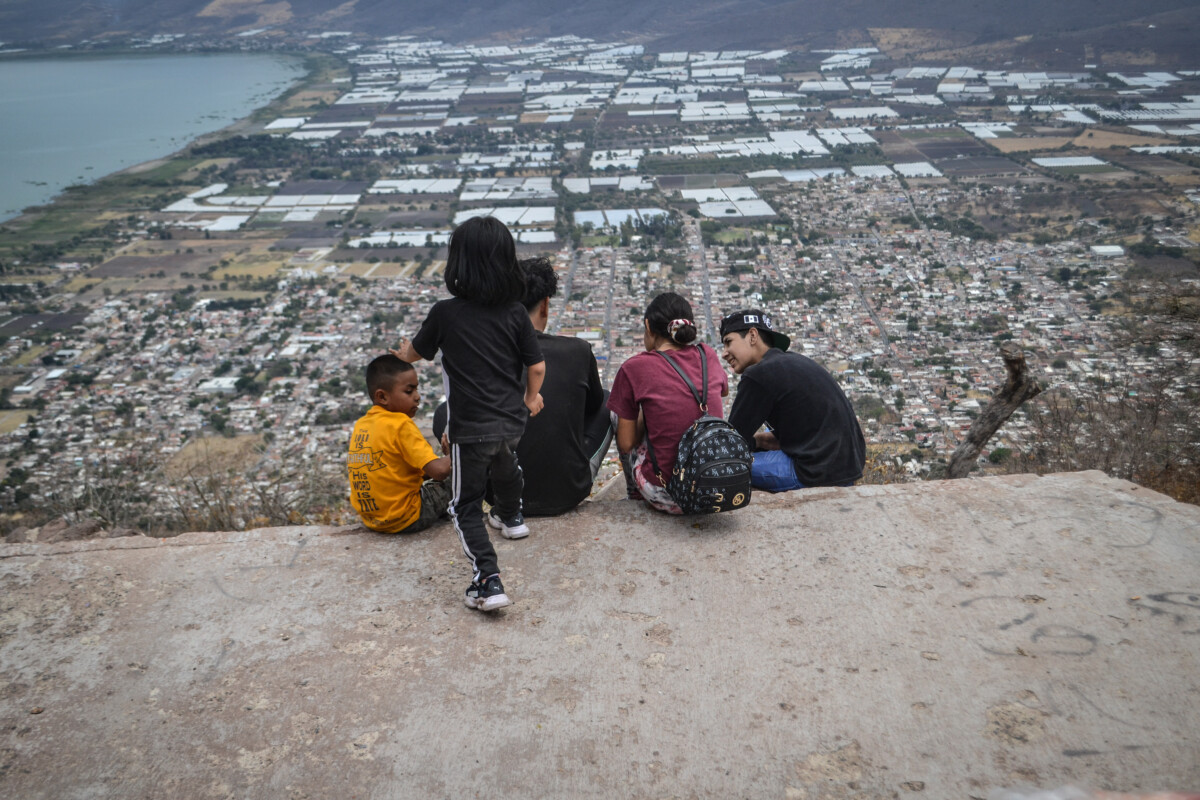
The municipal seat viewed rom the top of Jocotepec hill. Photo: Hector Ruiz.
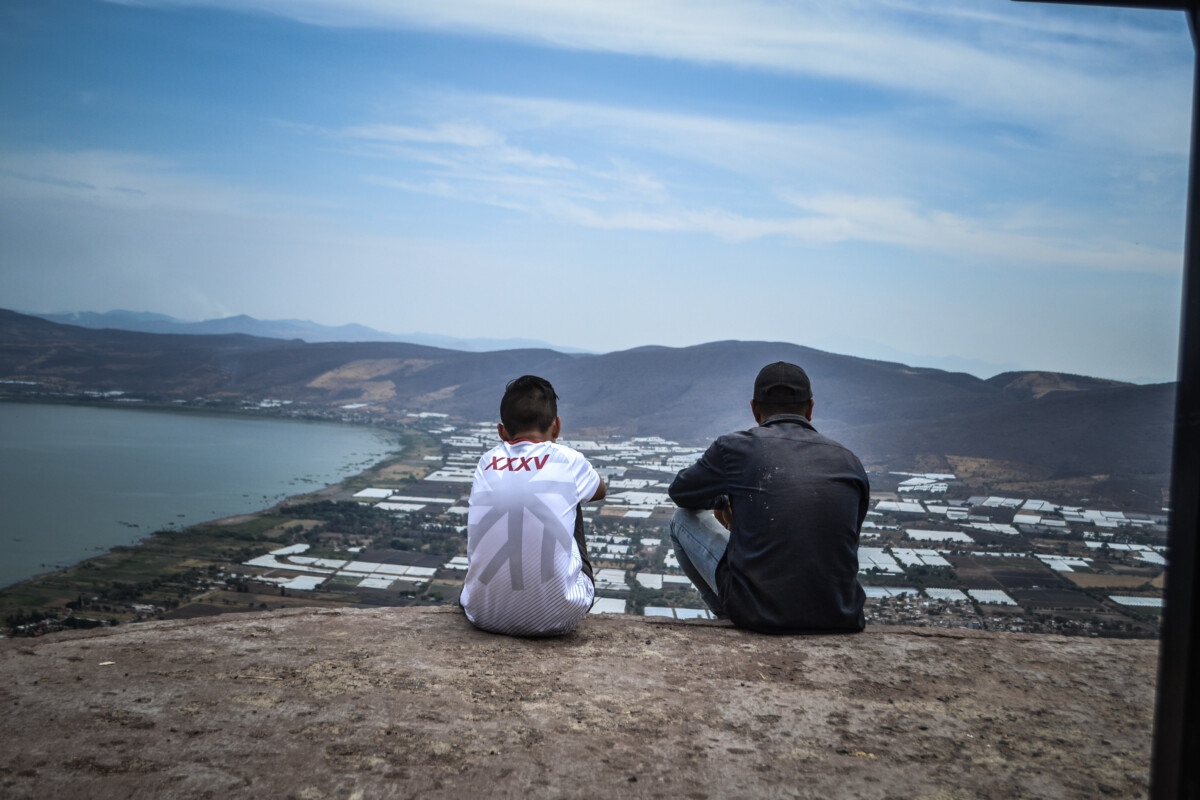
Father and son admire the view of Lake Chapala. Photo: Hector Ruiz.
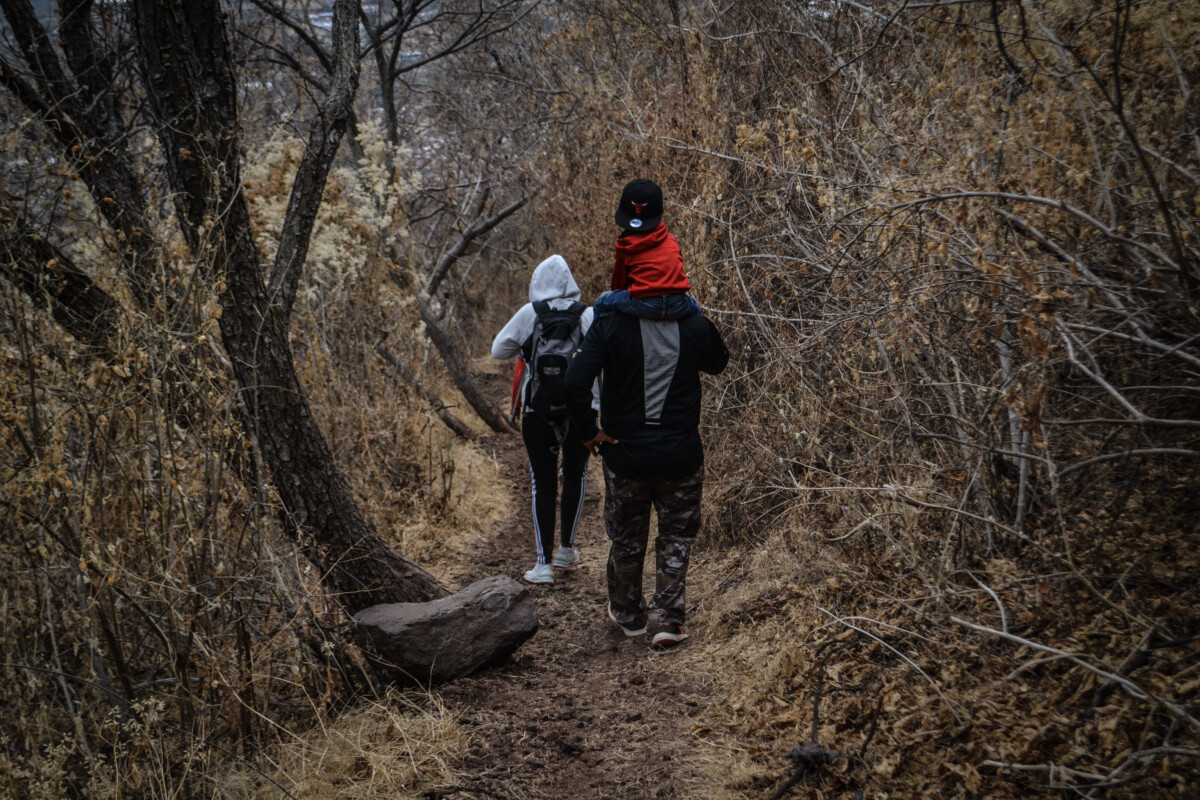
Beginning the difficult journey back, with another 1.7 kilometres to go. Photo: Hector Ruiz.
Translated by Alan Ferguson
Mothers celebrated at Ajijic Lienzo Charro ring
A scene from the event in 2018. Photo: Youtube.
Sofía Medeles (Ajijic).- The mothers of Ajijic were celebrated at a traditional event held on Sunday, May 8, at the Lienzo Charro de Ajijic.
The event was organized by the Ajijic Charros Association with the support of the municipal government.
The celebration began in the afternoon. Women and children under 12 were admitted without charge. Men and older children paid an entrance fee of 50 pesos.
Entrance fees went towards paying for prizes for mothers who took part in dance contests and various other competitions.
Translated by Alan Ferguson
Chapala and Jocotepec faced with ‘severe’ drought”warns Conagua
The return of the drought could affect the supply of drinking water to citizens. Photo: Archive.
Editors.- The Drought Monitor of the National Water Commission (Conagua), reported that Chapala and Jocotepec are among the 57 municipalities of Jalisco that face a «severe» drought level.
According to the agency’s update, 113 of Jalisco’s 125 municipalities have drought conditions ranging from «moderate» to «severe, which means that drought impacts are now felt throughout the state.
Together with the two Lakeside towns mentioned above, all the municipalities that make up the Guadalajara Metropolitan Zone (ZMG), as well as Colotlán, Mezquitic, Ameca, Tala, Lagos de Moreno and Tepatitlán, are the most affected by the situation.
The Conagua’s report detailed that during the last rainy season there was a lack of precipitation in the area of the Western Sierra Madre, as well as warmer than average temperatures in the West Central Region of the country, which contributed to an increase in the drought in Jalisco.
Twelve localities are classified as «abnormally dry» or without problems: Puerto Vallarta, Cabo Corrientes, Cihuatlán, Ayotlán, Cuautitlán de García Barragán, Degollado, Jesús María, Tolimán, Tonila, Tuxcacuesco, San Gabriel and Zapotitlán de Vadillo.
The National Meteorological Service noted that the hurricane season will begin on May 15 in the Pacific Ocean, while in the Atlantic Ocean it will begin on June 1. It is projected that rains will start to return to normal in the second half of June, with tropical waves, cyclones and high humidity.
Translated by Patrick O’Heffernan
Looking at Life in Lakeside:
By: Patrick O’Heffernan
Back in November 2021, our reporter in Jocotepec, Héctor Ruiz Mejía, wrote a story about the trash problem in San Juan Cosalá. He described garbage trucks with no gas, rats invading homes, a school with weeks’ worth of garbage stacked in front of its gates, and more.
Part of the problem is the refusal of Ixtlahuacán de los Membrillos to allow Jocotepec to continue dumping in the GEN landfill, a problem which the municipality is working on. But something else has come to my attention: the deterioration of the Carretera into the landfill that Jocotepec sorely needs.
If you drive from Ajijic to Joco and pass through the happy gauntlet of touts directing your attention to the seafood restaurants that line the lakefront, you won’t notice the piles of garbage lining the highway across from the eateries. In fact, one restaurant even has a large billboard announcing its presence astride a growing pile of garbage and debris.
Garbage, construction debris, junk, and old furniture now l fill open areas of the roadside of the Carretera practically from the county line to Jocotepec. Garbage trucks have nowhere to put what they collect . But people have to put it somewhere and the roadside is the easiest and most available place.

Trash on the Carretera in restaraunt row
But do you really want to take your out of town visitors to any of the great restaurants along the lake when you have to drive through a smelly field of trash? Maybe not – after all there are so many great restaurants in both Chapala and Jocotepec on clean, trash-free streets. Some even have great lake views.
To be fair, you can’t blame the Jocotepec municipality for the problem of the lack of a landfill and you have to cheer them for trying to solve it. The Carretera – Highway 23 – is Federal property; neither the state nor the municipalities have the authority nor the funds to clean it. And it is not fair to ask businesses along the Carretera to clean up the piles every day; that is what they pay taxes for. And where would they put it?
Perhaps the solution lies in the kind of collaboration and citizen action we have seen in Ajijic and Chapala. Until Jocotepec acquires a landfill, Expats and Mexican citizens and local businesses can raise funds, purchase a dedicated garbage truck, lease a piece of land, fence it and clean up the highway until Jocotepec has the funds and a landfill.
Yes, the Carretera Federal is managed by the Secretaría de Comunicaciones y Transportes, SCT) and it is the Federal government’s responsibility. But let’s face it, the garbage would completely block the highway before the SCT got around cleaning the roadside.
In Chapala, expats have purchased fire trucks for the Bomberos. Why not a garbage truck for the Jocotepec Carretera? In Ajijic, the delegado has organized citizens to fill potholes; why not similar brigadistas in Joco to load trash from the roadside into the truck and haul it to a properly fenced and managed leased site.
This is a temporary solution to be sure, but the investment and the collaboration will last a long time and give the Jocotepec government and people an opportunity to show how well they care for their community . And might even pay for itself in increased business to the lakeshore restaurants.
Escaramuza Caballito de Palo national circuit opens in Ajijic with its first event of the season
Erika Navarro and the Ajijic Potranquita team ready to perform. Photo: Patrick O’Heffernan
Patrick O’Heffernan and Sophia Medeles (Ajijic).- The Encuentro Nacional Caballito de Palo was held successfully in the Lienzo (bullring) in Ajijic last Saturday to a cheering crowd from around the country. The Encuentro is a demonstration of the skills of girls 4-11 riding stick horses in precision drills as part of training for the Escaramuza women’s event in the Charreadas, the Mexican rodeos.
No prizes were given out to the teams from different states but the head of the Ajijic team received a proposal for marriage in the Lienzo field, which she accepted, along with an engagement ring.

Drill team from San Pedro at the Ajijic Lienzo. Photo: Patrick O’Heffernan
Teams rode their “palos” – stick ponies – in “skirmishes” consisting of circling, riding to rapid stops, and executing drill team movements. Saturday’s event was a demonstration, not a competition. The teams pay a registration fee, present their routines in the skirmishes and receive a certificate of recognition and a dinner.
Erika Navarro, as a guest, with Mrs. Amparo Robledo, coaches the Ajijic team, told Laguna that this is the 7th year that the Escaramuza Caballito de Palo national circuit has been held, and Saturday’s event was the opening event of the circuit’s 2022 season.

Erika Navarro hugs her now-fiancé Betoo Pérez after accepting his proposal. Photo: Patrick O’Heffernan
The Caballito de Palo girls are in training to ride the Escaramuza which consists of 8 women riding sidesaddle in full costume executing complex, military-style drills, or “skirmishes”. The sport is fast-paced and often dangerous.
Teams from 6 states attended, most bringing large, noisy cheering sections with them. Each team was dressed in their state’s traditional Caballito de Palo costume and brought their stick horses with them. The Ajijic team was dressed in turquoise and included a young boy who accompanied the girls on some of the drills and the hat dance.

Erika Navarro and Beto Pérez show off her new engagement ring . Photo: Patrick O’Heffernan
Toward the end of the event, Ms. Navarro walked out to the field to meet one of the staff, her long-time boyfriend Beto Pérez , and was surprised when he dropped to his knees and proposed marriage. After accepting, Navarro gave her now-fiancé a big hug and turned to the cheering crowd to show off the engagement ring he had just slipped on her finger.
The Circuito Nacional De Escaramuzas Caballito de Palo »is a national organization directed by Pamela Ángeles Sáenz. Itzel González was in charge of the Ajijic event, together with the municipal government of Chapala, and the Asociación de Charros de Ajijic, which provided them with the facilities. The next event in the circuit will be in Acambay, State of Mexico, on June 16 and the Potranquitas – the Ajijic team plan to be there but needs to raise the funds for transportation. To donate contact Erika Navarro through the Potranquitos FB page at https://www.facebook.com/escaramuzacaballosdepalolaspotranquitas.ajijic
Construction work near Cerro Colorado causes uproar among Ajijic residents
Bulldozer working on the mountainside (just visible slightly above center of photo). Photo: Ajijic Citizen Observatory.
Sofía Medeles (Ajijic).- The internet has been abuzz with reports that heavy machinery has been working near the iconic Cerro Colorado mountain, west of Ajijic.
The group Ajijic Observatorio Ciudadano published reports and a photo of a bulldozer visible at the scene. In the comments section of their post the group specified that the construction site is located between Cerro Colorado and Cerro Las Tres Cañadas, or behind Cerro Colorado.
Chapala Director of Social Communication Elizabeth Oropeza Silva said the government was aware of the situation. When inspectors showed up at the site, they were shown construction licenses approved during the last administration.
«The permits granted during the past administration were reviewed and found to be in order, although there are things that appear to be out of place. We are working to review and analyze if there are any inconsistencies,» said Elizabeth Oropeza Silva.
Both on the internet and among residents, there is a lot of talk about the project. Conversations center around the identities of several presumed owners of the property, their intentions, and involvement of the Indigenous Community of Ajijic.
Two officials stated in the publication that uncovered the project that the Department of Ecology, among other agencies, is investigating the case.
Elizabeth Oropeza Silva added that they are still investigating, and that from what they have perceived, the space where they are working looks very large.
The Cerro Colorado is very dear to the people of Ajijitecos, as it is a site that is home to legends, and is part of the town’s history and popular culture. It is also recognized by visitors because of its peculiar shape, which resembles the head and wing of a bird of prey.
Residents of Ajijic interviewed by Laguna said that the hill has already been threatened by urbanization on other occasions, and is at risk of subdivision for homes as it is owned by several private individuals.
Translated by Patrick O’Heffernan
OPINIÓN: EL GRITO EN LA LAGUNA
El Lago de Chapala. Foto: Héctor Ruiz.
Por: Daniel Jiménez Carranza
Sin duda, actualmente estamos afrontando las consecuencias de una crisis generada en principio por la pandemia, y enlazada con el conflicto bélico en Europa, que ha provocado incertidumbre y desestabilización en las economías a nivel global, marcadas por el incremento del desempleo, incremento en el precio de los combustibles, escasez de alimentos, y que puede complicarse si es que este fenómeno no llega a una solución pacífica ausente de aquéllas respaldadas por la proliferación armamentista de sus actores.
Un conflicto bélico de mayor magnitud, definitivamente provocará una conflagración a nivel mundial, pues mayor número de países se involucrarán, los armamentos empleados serán de mayor calibre, a tal grado que desembocarán en una confrontación nuclear, en donde no habrá vencedores ni vencidos, pero sí muerte, desolación y destrucción del hábitat, cuya regeneración llevará años.
La aportación de capital y armas para Ucrania, no ayudarán a resolver el conflicto, sino todo lo contrario, es preciso encontrar una alternativa válida a través de una comisión de paz integrada por países representativos y la ONU, para resolver este enfrentamiento .
La política no intervencionista de nuestro país, se ha mantenido firme y sólida ante tales circunstancias, apoyada en el respeto de los países al mantenimiento de su integridad territorial, lo cual es notablemente condenable, en el caso de la agresión armada como la que se ha fraguado en Ucrania.
Los efectos económicos y sociales de esta confrontación militar y la pandemia, han puesto de manifiesto la necesidad de fortalecer los lazos regionales de integración entre países que por su condición geográfica, se alineen en un bloque común que internamente se fortalezca y sea autosuficiente, y que sin duda, la propuesta del presidente López Obrador, de integrar no sólo a los países Latinoamericanos, sino a todo el continente, incluyendo EE.UU. y Canadá, sería un logro trascendental que beneficiaría y complementaría a todas las economías de países que en la actualidad se encuentran a la zaga de cualquier posibilidad de remontar su condición social y económica como consecuencia de su incapacidad de explotar y comercializar adecuadamente sus recursos. Esta integración regional, deberá ser acompañada de la creación de un fondo de infraestructura con aportación de todos los países integrantes, que permita disponer de recursos a países carentes de los mismos, para construir carreteras, puertos, y todas aquellas instalaciones y equipos que requieran.
Encarcelan a mujer señalada de probable abuso sexual infantil
Laura S. fue detenida en días pasados en la zona centro de Atequiza. Foto ilustrativa: Internet.
Redacción.- Tras una investigación con perpectiva de género, la Fiscalía Especial Regional del Distrito V obtuvo una orden de aprehensión contra Laura S. quien también se hace llamar Laura Araceli S., por la probable comisión del delito de abuso sexual infantil agravado en Ixtlahuacán de los Membrillos.
La Fiscalía informó que los hechos ocurrieron en abril del año en curso, en una finca ubicada en el poblado de Atequiza, cuando la víctima, quien es menor de edad, se quedó a solas en su domicilio.
El agente del Ministerio Público obtuvo una orden de aprehensión en su contra mediante la cual fue capturada por Policías de Investigación en la zona centro de la demarcación ya señalada.
La mujer fue asegurada conforme lo establece el protocolo y quedó a disposición del Juez de Control y Juicio Oral del Quinto Distrito Judicial con sede en Chapala, quien resolverá su situación jurídica.
Dicha persona se le presume inocente y se le dará ese tratamiento durante las etapas del procedimiento judicial en tanto no se declare su responsabilidad mediante sentencia emitida por el órgano jurisdiccional.
Foto Galería:
Las selecciones de Chapala y Jocotepec, se enfrentaron con intensidad en el Campo Municipal Juan Rayo, el domingo 8 de Mayo. El clásico ribereño concluyó con un empate a ceros.
Jazmín Stengel.- Mucha intensidad, pocos goles. Las Selecciones de Chapala y Jocotepec dieron todo hasta el último minuto; sin embargo, el marcador se decidió en ronda de penales a favor de los locales con un marcador de 4 – 3.

A pesar de que Chapala dominó la mayor parte del partido, Jocotepec lo hizo en los últimos minutos del primer tiempo.

Los ataques por parte de ambos equipos fueron muchos, sin embargo ninguno logró marcar un gol en el tiempo regular.

Dos tarjetas amarillas y un lesionado fue el saldo del primer enfrentamiento entre Chapala y Jocotepec esta Copa Jalisco 2022.

El marcador final se decidió en tanda de penales.

La selección de Chapala triunfó con 4-3

Cerca de 300 personas asistieron al clásico ribereño del año este fin de semana.

Grupos de amigos y familias asistieron a ver el juego.

La porra de Jocotepec también presentó una considerable asistencia al partido.

En el medio tiempo, las jugadoras de las selecciones Chapala e Ixtlahuacán femeniles asistieron a ver el juego.

La porra oficial de Chapala, con percusiones en mano y al grito de !Vamos Chapala, que esta tarde tenemos que ganar!

El equipo de la Diez del Barrio durante la transmisión del partido. Esta casa productora transmite en la red social de Facebook todos los partidos de la Selección Chapala.
Arranca vacunación contra COVID-19 para adolescentes en municipios
Los adolescentes del estado son vacunados con el biológico Pfizer, de acuerdo al Plan Nacional de Vacunación. Foto: SSJ.
Redacción.- El lunes 09 de mayo inició vacunación contra COVID-19 en los municipios del interior del estado de Jalisco, donde la jornada arrancó en los centros de salud, principalmente de las cabeceras municipales, sin necesidad de cita, informó la Secretaría de Salud Jalisco (SSJ)
Los adolescentes reciben la vacuna del laboratorio Pfizer BioNTech en tanto que a los adultos se les suministra el biológico de AstraZeneca, en apego a los lineamientos federales del Plan Nacional de Vacunación.
Paralelamente, la SSJ compartió que hay disponibles primeras, segundas y dosis de refuerzo para adultos a partir de los 18 años quienes no requieren cita, sino presentarse en horario matutino en los centros de salud pertenecientes al estado. La semana pasada acudieron a vacunarse más de 12 mil personas mayores de edad.
CORTE SEMANAL DE CASOS
De acuerdo con datos de la SSJ, en Jalisco, durante la semana epidemiológica 18 (que fue del 1 al 7 de mayo del presente año) se registraron 508 casos confirmados de COVID-19, para un acumulado al 7 de mayo de 588 mil 708 personas contagiadas. Se reportaron además 26 defunciones por esta enfermedad, para un total de 19 mil 441 decesos notificados por esta enfermedad en lo que va de la pandemia hasta el pasado día 7.
© 2016. Todos los derechos reservados. Semanario de la Ribera de Chapala
